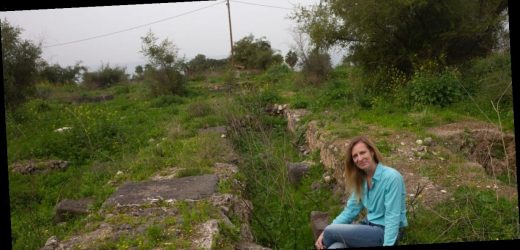- The foundations of an ancient mosque have been unearthed in Israel.
- It was built around a generation after the Prophet Mohammed, making it one of the oldest.
- Archaeologists say its building phases indicate peaceful coexistence between religions at the time.
- Visit Business Insider’s homepage for more stories.
The remains of an ancient mosque have been unearthed in Israel in a find that archaeologists say indicates historically harmonious relations between Muslims, Christians, Jews and Samaritans.
The mosque foundations date back to a generation after the life of the Prophet Mohammed, putting them among some of the oldest ever found, the Associated Press (AP) reported.
Dr Katia Cytryn-Silverman, a specialist with the Institute of Archaeology at the Hebrew University, oversees the dig site in the city of Tiberias, just south of the Sea of Galilee, also called Lake Tiberias, Kinneret, or Kinnereth.
Scholars previously thought the area centered around an old marketplace, according to Haaretz. But investigation further, Cytryn-Silverman’s team found it to be the remains of an 8th-century mosque — and then, below that, an even older one dating back to the 7th century, the newspaper reported.
Researchers figured out the time in which the mosque was in use by examining detritus like coins and pottery fragments on-site, the newspaper reported.
Mohammed died in 632 AD, putting him within a generation’s reach of the site’s earliest remains. Other, similarly-aged ancient mosques — such as the Prophet’s Mosque in Medina or the Al-Aqsa mosque in Jerusalem — are in present-day use and cannot be excavated for archeological study.
The Tiberias mosque was built during a time when the Islamic empire was spreading across the Levant and Mesopotamia — roughly akin to what is today referred to as the Middle East.
The development phases of the ruins suggest that — contrary to what some scholars previously thought — the Muslim rulers of the area had not been in a hurry to stamp their authority over the other religious groups at the time, Cytryn-Silverman told the AP.
The older structure was smaller and “more humble,” Cytryn-Silverman told the AP, before being replaced by a grander mosque around 50 years later.
“You see that the beginning of the Islamic rule here respected very much the population that was the main population of the city: Christians, Jews, Samaritans,” Cytryn-Silverman told the AP.
“They were not in a hurry to make their presence expressed into buildings,” she added. “They were not destroying others’ houses of prayers, but they were actually fitting themselves into the societies that they now were the leaders of.”
She also told Haaretz: “This was an area that was multireligious and a very moving symbol of regional coexistence.”
The find also helps archeologists figure out when early Muslims began building houses of worship to face Mecca, the AP reported.
Source: Read Full Article


